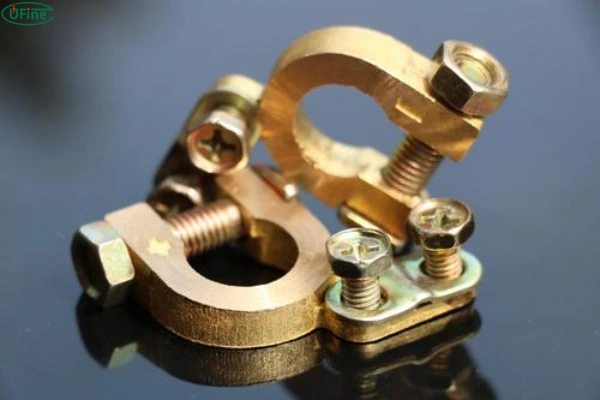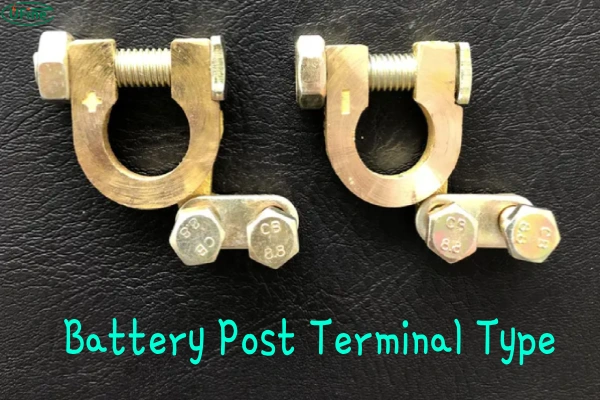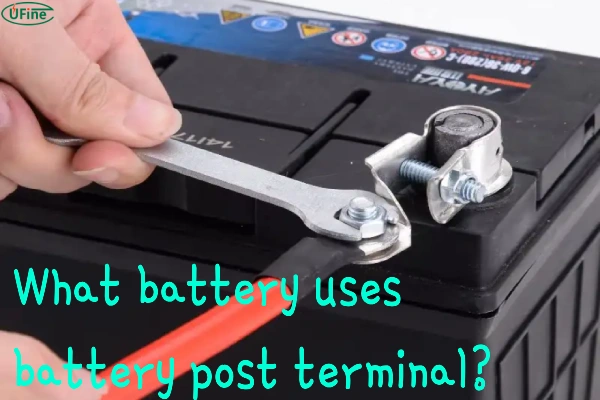Imagine you’re about to start your car on a cold morning, but nothing happens. It could be a simple issue—a loose or corroded battery post terminal. These small components are the lifeline of any battery-powered device. From cars to boats, to industrial equipment, battery post terminals ensure a stable connection between the battery and the electrical system. Understanding them not only helps you solve issues but also ensures your battery’s long-term performance. Let’s explore in detail what battery post terminals are, how they function, and why taking care of them is critical.
Part 1. What is the battery post terminal?

A battery post terminal is the connecting point on a battery that links it to the electrical system, allowing power to flow from the battery to whatever device or machine you’re operating. Made from durable materials like lead or copper, battery post terminals come in various shapes and sizes, but their role remains the same—ensuring a secure, reliable connection.
Real-world scenario: Think of the battery terminal as the handshake that makes your electrical system work. Without a good grip, the connection is weak, and you might experience flickering lights, sluggish engine starts, or even complete power failure.
Part 2. Battery post terminal function
The primary function of a battery post terminal is to provide a stable, conductive connection between the battery and the electrical system. Without these terminals, the energy stored in the battery couldn’t transfer to the engine, lights, or electronics. A faulty terminal can compromise the entire electrical system. This is why ensuring a solid, corrosion-free connection is key.
Part 3. Battery post terminal type
Understanding the various types of battery post terminals can help you choose the right one for your application. There are four main types:
- Top Post Terminals: These are the most common type, especially in automotive batteries. They sit on top of the battery, and the cables connect with clamps.
- Side Post Terminals: Found in certain General Motors vehicles, these terminals are located on the side of the battery and use a bolt-in connection for the cables.
- Marine Terminals: Designed to withstand harsh environments, marine terminals resist corrosion from saltwater and are ideal for boats. They come in both top and side post variations.
- Stud Terminals: Used in heavy-duty and industrial applications, these terminals offer a more robust connection, ideal for equipment that demands a lot of power.
Types of Battery Terminal Connectors
Part 4. What battery uses battery post terminal?
Battery post terminals are found in a wide range of applications. Let’s break down some common examples:
- Cars and Trucks: Whether you drive a compact car or a heavy-duty truck, your vehicle relies on battery post terminals to deliver power for starting the engine and running electrical components like headlights, dashboard lights, and radios.
- Marine Batteries: Boats rely on marine terminals, specifically designed to handle the rigors of saltwater and moisture, ensuring consistent power while out on the water.
- Solar Batteries: Solar energy systems use terminals to connect the battery to the inverter, ensuring energy generated by solar panels is stored and distributed efficiently.
- Industrial Equipment: Forklifts, backup generators, and other industrial machines often use larger stud terminals for their high-power requirements.
Consider a boating enthusiast preparing for a weekend trip. Ensuring that their marine battery terminals are in top shape ensures that their boat engine starts reliably and their electronic devices function smoothly on the water.
Part 5. How do I choose a battery post terminal for my battery?
Selecting the right battery post terminal depends on several factors, including the application, the type of battery, and the environment in which the battery will operate. Here are some key things to consider:
- Material: Copper and brass terminals are best for marine applications due to their resistance to corrosion. Lead terminals are more common in automotive applications because they are durable and highly conductive.
- Size: The terminal size must match the battery post size. A loose or improperly sized terminal can lead to poor electrical connection and potential power loss.
- Type: Consider the type of terminal (top post, side post, marine) based on your battery’s design. Some batteries are only compatible with specific terminal types.
- Durability: For high-current or heavy-duty applications, choose terminals designed to handle extreme conditions.
Part 6. How to replace battery post terminals?
Battery terminals can degrade over time due to corrosion or wear and tear. If your battery terminals are damaged, replacing them is essential for restoring efficient power flow. Here’s a step-by-step guide:
- Turn Off the Vehicle or Equipment: Always ensure the power is off before beginning work.
- Disconnect the Battery Cables: Using a wrench, loosen the negative terminal first, followed by the positive terminal. This ensures no accidental short circuits.
- Remove the Old Terminals: Once the cables are free, gently twist the old terminals off the battery posts.
- Clean the Battery Posts: Use a wire brush or battery cleaner to scrub away any corrosion or dirt on the battery posts.
- Install New Terminals: Place the new terminals onto the clean battery posts and secure them tightly with the provided hardware.
- Reconnect the Battery: Attach the positive cable first, followed by the negative, ensuring each is snug and secure.
Part 7. How to connect the battery post terminal?
Connecting battery post terminals properly ensures your battery performs at its best. Here’s how:
- Identify the Positive and Negative Terminals: The positive terminal is usually marked with a “+” and the negative with a “-”.
- Attach the Cables: Always connect the positive cable to the positive terminal first. Then, attach the negative cable to the negative terminal.
- Tighten the Bolts: Use a wrench to ensure both terminals are secure. Don’t overtighten, as this could damage the terminals.
Part 8. How to clean the battery post terminal?
The Battery Terminal Blues: Understanding Corrosion and How to Fix It
Over time, battery terminals can become corroded, which leads to poor electrical contact. Cleaning the terminals is an easy way to maintain optimal battery performance. Here’s how to do it:
- Disconnect the Battery: Always start by disconnecting the negative terminal first, then the positive.
- Clean the Terminals: Use a mixture of baking soda and water with a stiff brush to scrub away corrosion. A specialized battery cleaner or brush works well for this, too.
- Rinse and Dry: Rinse the terminals with water and dry them thoroughly with a clean cloth.
- Apply Protective Grease: To prevent future corrosion, apply a small amount of petroleum jelly or dielectric grease to the terminals.
- Reconnect the Battery: Attach the positive terminal first, followed by the negative.
By understanding battery post terminals and how to maintain them, you can extend the life of your battery and ensure consistent performance. Whether you’re a car owner, boat captain, or industrial technician, properly managing your battery connections is vital for staying powered up when it matters most.
Related Tags:
More Articles

How to Choose the Best Floor Scrubber Battery for Commercial Cleaning?
Selecting the ideal floor scrubber battery ensures a long runtime, rapid charging, and minimal maintenance for efficient commercial cleaning operations.
Battery for Blower vs Battery for Leaf Vacuum: Which One Should You Choose?
Battery for blower vs leaf vacuum—learn the key differences in power, fit, and runtime to choose the right battery for your outdoor tool needs.
How to Choose the Right Battery for Blower?
Choosing the right blower battery? Consider voltage, capacity, chemistry & usage. This guide helps match the best battery for peak performance.
How to Choose the Best Insulated Battery Box for Lithium Batteries?
Choosing the Best Insulated Battery Box for Lithium Batteries? Discover key factors such as size, material, and safety for optimal protection and performance.
7 Critical Elements on a Lithium Battery Shipping Label
What must be on a lithium battery shipping label? Learn 7 key elements to ensure safety, legal compliance, and correct handling across all transport modes.





